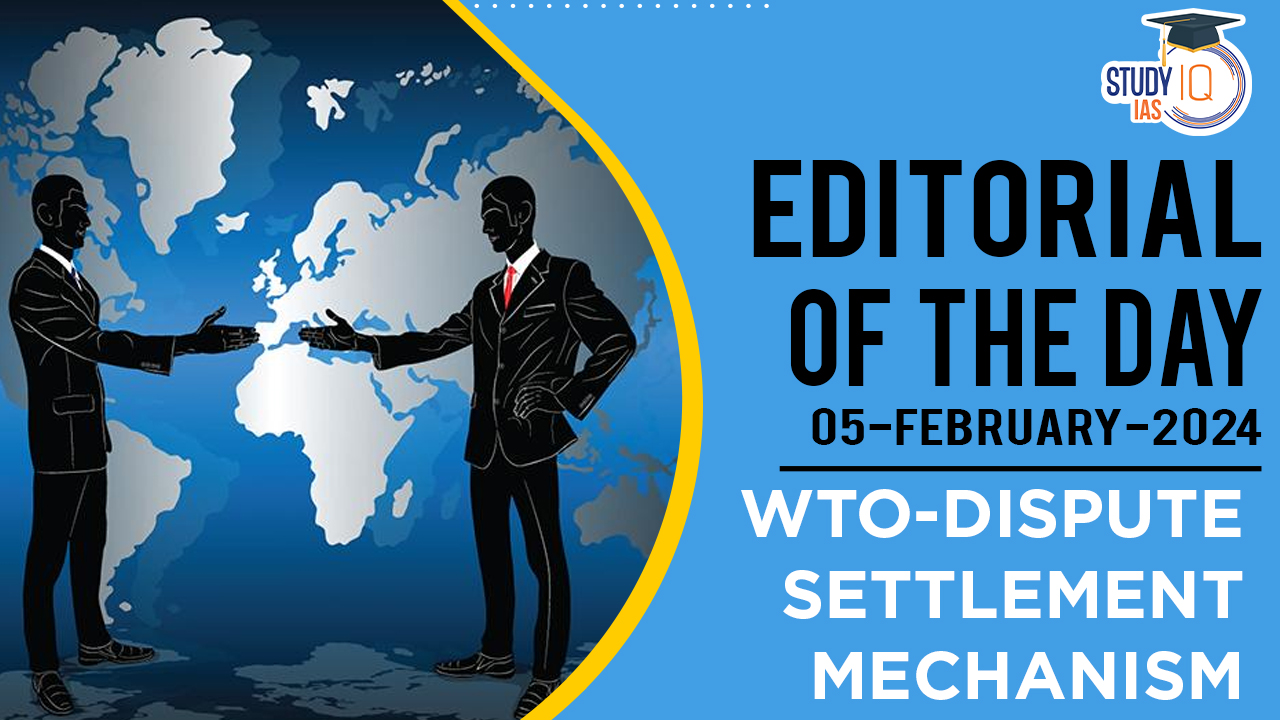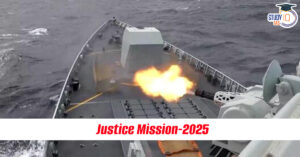Table of Contents
Context: The World Trade Organization (WTO) is facing an ongoing crisis with its Dispute Settlement Mechanism (DSM), often considered the crown jewel of the international trading system. The DSM’s Appellate Body (AB), which serves as an appeals forum, has been hamstrung due to the US blocking the appointment of new members, which has led to the body becoming non-functional.
About WTO-Dispute Settlement Mechanism
- Origin: The WTO’s Dispute Settlement Mechanism (DSM) was established in 1994 after the Uruguay Round negotiations (1986-1994).
- Purpose: It aims to provide stability and predictability to the multilateral trading system and resolve disputes efficiently and dependably according to established rules.
- Role: The DSM offers a forum for countries to assert their rights and defend against claims, ensuring the interpretation and application of WTO agreements.
- Jurisdiction: WTO’s jurisdiction over disputes is compulsory for all member states, which are bound by the DSM upon signing and ratifying the WTO agreement.
- Triggering Disputes: A dispute can be initiated when a member’s trade policy is viewed as inconsistent with WTO agreements by one or more member states.
- Structure: The WTO’s General Council also functions as the Dispute Settlement Body (DSB), which is responsible for settling disputes.
We’re now on WhatsApp. Click to Join
DSB’s sole Authority
- Establish expert panels to hear cases.
- Accept/reject panel findings or appeals.
- Monitor implementation of rulings/recommendations.
- Authorise retaliation against non-compliant members.
Process
- Consultations: Initially, the disputing parties engage in consultations to resolve their differences.
- Adjudication: If necessary, the dispute is adjudicated by panels, with the option for appeal to the Appellate Body.
- Implementation: The final stage involves the enforcement of the ruling, which may include countermeasures against a party failing to comply with the decision.
Appellate Body
- The Appellate Body, set up in 1995, is a standing committee that presides over appeals against judgments passed in trade-related disputes brought by WTO members.
- Composition: The WTO Appellate Body consists of seven members selected by the Dispute Settlement Body (DSB) to serve four-year terms.
- Appeal Panel Structure: An appellate panel is formed from three of the seven AB members for each case.
- Qualifications of Members: Members are chosen for their expertise in law, international trade, and familiarity with WTO agreements, often being academics, lawyers, ex-government officials, or judges.
Solutions Proposed
- Interim Appeal Arbitration Arrangement (MPIA): One option for WTO members is to join the European Union-led MPIA, which formalises an alternative arbitration process outside the traditional Appellate Body framework.
- Truncated Appellate Body Processes: The US has suggested considering an Appellate Body whose powers and processes are truncated in various ways, such as limiting its ability to set legal precedents or requiring decisions to be deferential to the disputing parties.
- Third Option of Judicial Independence: As suggested by scholars, there is an alternative proposal to restructure the Appellate Body with the same format it held in 2019, but with an independent judicial process, giving countries the option to opt out of the Appellate Body’s compulsory jurisdiction.
Issues Related to WTO-DSM
- Appointment: The United States blocks the appointment of new members to the AB, rendering it non-functional.
- Compulsory Jurisdiction: Since the end of 2019, the AB’s inability to function due to the lack of judges has compromised the compulsory jurisdiction over all WTO members, critical to the dispute settlement mechanism.
- Interim Arrangements: Interim solutions like the Multi-party Interim Appeal Arbitration Arrangement (MPIA) have been proposed.
- The MPIA’s voluntary nature means that not all WTO members are on board, and it does not have the same level of legal security as the AB process, which may result in a non-uniform application of WTO rules.
- Diluted Appellate Body (AB): Proposals to truncate the AB’s powers or defer to the disputing parties may result in a diluted AB that cannot provide strong legal precedents, reducing the body’s effectiveness and potentially damaging the WTO’s credibility.
- Retaliation and Non-compliance: There is a risk of countries retaliating in disputes due to the AB’s compromised state, which could lead to an increase in trade conflicts and destabilisation of global trade relations.


 National Technology Readiness Assessment...
National Technology Readiness Assessment...
 Justice Mission-2025: China’s Live-Fir...
Justice Mission-2025: China’s Live-Fir...
 Suryastra: First Made-in-India Long-Rang...
Suryastra: First Made-in-India Long-Rang...

























